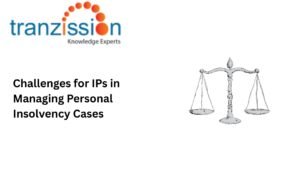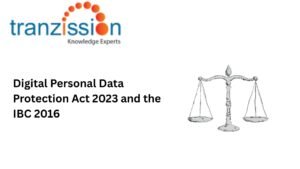
Treatment of secured and unsecured creditors in insolvency
Table of Contents
When a corporate debtor faces financial distress they undergo the insolvency process. If this process is not successful because the debtor and its unsecured creditors are not able to reach a viable repayment plan or the National Company Law Tribunal decides that the corporate debtor should be liquidated, the liquidation process commences under the Insolvency and Bankruptcy Code, 2016 (hereon forward known as “the Code”). Once the sale of corporate debtors’ assets is done, the proceeds from these sales are distributed among the creditors on a priority basis, depending on the repayment of their debts. Let’s find out which creditors have a higher priority in the distribution of proceeds. But where do unsecured creditors stand in this hierarchy? Unlike secured creditors, who have collateral backing their claims, unsecured creditors often face greater risks and lower recoveries. Let’s explore which creditors are given higher priority in the distribution of proceeds and how unsecured creditors are treated in this process.
Read more : Communication Strategies for Creditors During a Bankruptcy
What is a Secured Creditor?
A secured creditor is a creditor in favour of whom security interest is created as per section 3(30) of the Code. They have a claim over the company’s assets, such as legal fixed or floating charges. Secured creditors have the highest priority after the insolvency resolution process costs and liquidation costs are paid in full. There are two types of secured creditors:
- Fixed charge creditor
- Floating charge creditor
Fixed Charge Creditor
Fixed charge creditors have a claim over a specific asset of the company, for instance, property, vehicles, machinery, etc. This type of creditor will be paid monies that are owed from the sale of the specific asset that they have a claim. Fixed charges are more preferable over floating charges as lenders can easily sell off a company’s assets in insolvency. This type of charge needs to be registered with the Companies House in the United Kingdom. After understanding the type of charge and preparing the required documents, Form MR01 needs to be filed and submitted with the fee payment. Once there is confirmation of the application, the applicant will receive a certificate of the registration of the charge within 5 days, which will have the state of the company number, charge code, company name, and the date the charge was created. Receiving this certificate means that the registration of the charge is successful.
Read more : All About Waterfall Mechanism Under IBC
Floating Charge Creditor
Floating charge creditors do not have any claim over a particular asset of the corporate debtor but do have claims over changing company assets, such as inventory stock, cash, or work in progress. The charge ‘floats’ over these assets until the company defaults or enters an insolvency process. The position of floating charge creditors is below that of fixed charge creditors in insolvency repayment.
What is an Unsecured Creditor?
Although the definition of an ‘unsecured creditor’ has not been given in the provisions of the Code, it can be implied that an unsecured creditor is a type of creditor to whom no security interest is created. This means that they can claim monies that are owed from a company only after the secured creditors have done so, which is reflected in the distribution of proceeds in section 53. They rank below unsecured creditors but above shareholders.
Examples of Secured and Unsecured Creditors
Now that secured and unsecured creditors have been explained, let’s list some common secured and unsecured creditors:
Secured Creditors
- Banks with fixed charges on property or other business assets.
- Invoice factoring companies that have effectively bought sales ledger hold a fixed charge over the book debts in their control.
- Lenders with a charge over assets, such as inventory, equipment, and machinery.
Unsecured Creditors
- His Majesty’s Revenue and Customs (in some cases)
- Contractors
- Customers
- Suppliers
- Utility providers
HMRC is Both Secured and Unsecured Creditor in the United Kingdom
HMRC has a dual role in insolvency and liquidation proceedings, as they can be classified as unsecured creditors for some taxed and preferential creditors for others. For example, HMRC is an unsecured creditor for direct taxes (corporation tax and employer National Insurance Contribution) and a preferential creditor for value-added tax, Construction Industry Scheme and Pay As You Earn (PAYE). The priority of HMRC claims is after fixed charge but before floating charge holders.
What are the Key Differences Between Secured and Unsecured Creditors?
The key differences between secured and unsecured creditors in insolvency, bankruptcy, and liquidation depend on the kind of security they hold over a company:
- Secured creditors have a higher priority than unsecured creditors in the distribution of proceeds as per section 53 of the Code.
- Secured creditors are generally paid in full and unsecured creditors may not get paid at all.
- A secured creditor has a charge over a particular asset or set of changing assets, while unsecured creditors do not hold a charge and receive money should there be some available once the secured creditors have been paid.
What is the Role of Insolvency Experts?
Insolvency experts can provide assistance to both secured and unsecured creditors. First, they can help a creditor understand whether they are a secured creditor or an unsecured creditor. Once, this is clarified, their rights during the liquidation process are explained, and how their debts are going to be repaid.
Conclusion
Where a resolution has failed and the NCLT has held that the corporate debtor cannot be revived, restructured, or rehabilitated, the debtor will then be liquidated. When the sale of the corporate debtor assets is completed during the liquidation proceedings, the proceeds from these sales are distributed among the debtor’s creditors, secured and unsecured. As per section 53 of the Code, secured creditors have a higher rank than unsecured creditors and are repaid after the insolvency proceedings costs and liquidation costs. Unsecured creditors fall below secured creditors but above shareholders. There is a high chance that unsecured creditors may not repaid at all. Understanding the position as a creditor, one will be able to predict the future steps and the potential of being repaid. Taking the help of an insolvency expert will simplify the process and enhance your knowledge of the available possibilities during liquidation. Where a resolution has failed and the NCLT has held that the corporate debtor cannot be revived, restructured, or rehabilitated, the debtor will then be liquidated.





